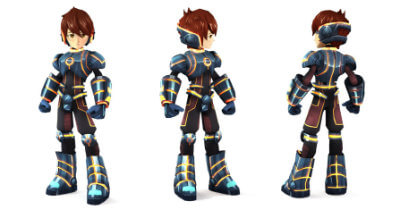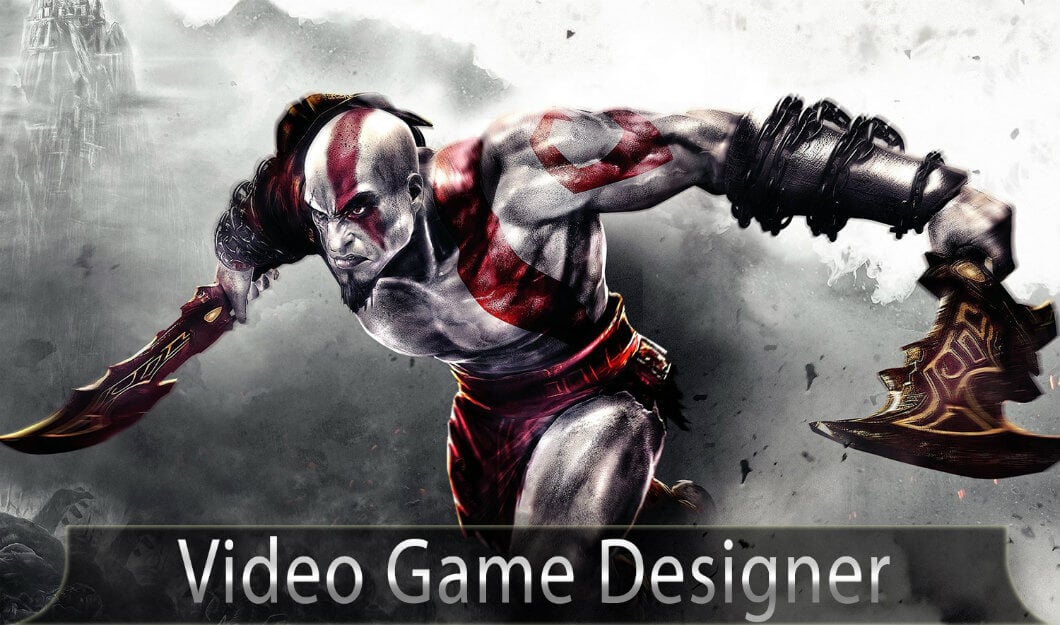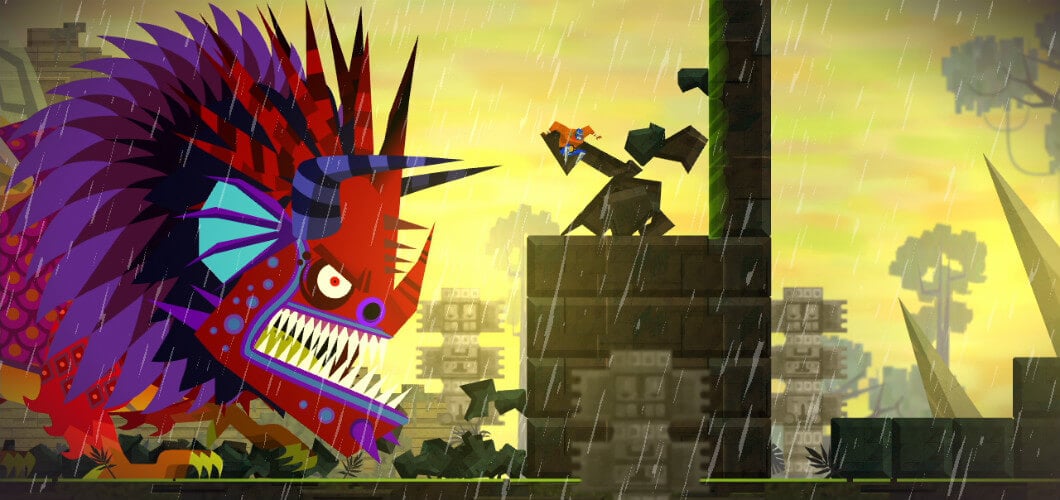Game Design In Video Games

Video Game Design demystified–Learn everything you need to become a game designer (professional or indie).
Welcome to the one-stop shop for all things game design (we're happy you made it). This page is the central hub–it's where we unpack the craft and touch on the majority of the info you can find throughout the site.
If this is your first time here, this is a great place to start.
First things first — What is Video Game Design?
Game Design refers to the complete process of generating an idea for a game and taking it all the way to a final, playable product.
Many people think exclusively of video games, but game design covers all kinds of games (board games, card games, video games, etc).
There are a lot of elements that go into designing a game.

And, depending on the size of the design team, you might find yourself saddled with one or more of the following challenges:
- Game mechanics
- Core game concept
- Character design
- Narrative and plot
- Level design
And that's just the obvious stuff. Video games need to be coded, tested, and debugged (and tested again, debugged again, tested again, debugged aga–you get the point).
Ultimately, your goal as a game designer is to create a game that's fun. A game that players can enjoy, revisit often and lose themselves in. After all, a great video game can actually be good for you 🙂
It doesn't take a Skyrim-caliber game for players to get hooked. You could make a text-based game right now on Twine that could transport people to a different world (but you'll probably need to hone your skills before you create a real winner–so let's keep going, shall we?).
How to Become a Game Designer

Becoming a game designer can be as simple as downloading one of the best game engines and pumping out some dubious content (ahh, semantics…).
But, becoming a good game designer will take much more time.
The simplest path is by designing games. The simple path is not the easy path (unless mom and dad have serious connections, there is no "easy path" to game design).
But you wouldn't be here if you were on the easy path (the "simple" path is far more rewarding, anyway).As you continue your research into game design, you will see this sentiment echoed over and over–Want to be a game designer? Then design games.
This advice might seem daunting. It might not sound sexy. It might not be the "secret tips and tricks" you were looking for.
But it's the only way to do what you're trying to do.
And you can start right now. We have lists of great tutorials and guides for beginners, covering more than enough topics for you to get started.
Interested in learning more about game programming languages, or Java, Flash, Unity, or Blender?
We have you covered (and then some!).
Or, if you're looking for formal education, you can head to a different corner of our site.
Getting a Game Design Education

YouTube and other free tutorials are a great resource if you're curious and motivated.
But sometimes a little refined guidance can provide the right kick in the butt to get you creating.
In that case, you could turn to online courses on platforms like:
- Coursera
- Pluralsight
- Udemy
These platforms can provide targeted information and skills for game design. Plus they typically have convenient course loads and flexible pacing so you can still have a life. Oh yeah, and they're offered at a price that won't obliterate your bank account.
If the world of online game design courses still isn't "formal" enough for you, there are colleges that offer game design courses.
How to Find the Best Game Design Schools
Schools like Digipen Institute of Technology, Rochester Institute of Technology, and the Savannah College of Art and Design have highly rated game design and game development programs.
The number of schools offering game design programs continues to grow–so check out our convenient lists of The top game 75 design schools in the world or digital animation schools for a good place to start your search.
You'll also find some programs that are in between the freedom of a self-paced online course and the rigid and expensive education of a college program.
CG Spectrum and Animation Mentor are a couple of programs we recommend.
The point is, you have options. Whatever your other life commitments are, there is a workable solution for learning game design.
But remember, a program certificate or a game design degree are not the only ways to enter the field (and they're far from a guarantee):
- It's a competitive field
- Game design programs are growing in number
- The supply of game design graduates has grown beyond the demand for them
Not to mention the majority of industry veterans broke into the industry without getting a game design degree–the game design degree is a fairly new phenomenon.
The degree likely won't be the differentiator… No, your portfolio is the key.
Building Your Portfolio

If you want to stand out, you need to build up your portfolio.
Prove to the hiring managers that you actually have some talent in your craft.
Show your character design skills. Show your creativity in level design. And definitely show off your ability to design a fun, polished game.
Hiring managers aren't expecting AAA projects on your portfolio–your games can be simple and clever.
Shoot for fun, different, unique, and well-executed.
P.S. If you get a college degree in game design, you still need to put some extra-curricular time into your portfolio.
If your portfolio only has projects you completed at school, it will look like thousands of other game design students' portfolios, who completed similar projects in similar programs.
You need to differentiate yourself. The only way to do that is to create your own games. Create in your free time. Create with your friends. Create create create!
Getting a Job
So your portfolio is the differentiator.
The next step is to figure out where you want to work.
Some cities, like Vancouver, are game design and animation studio hotbeds.
There are entry-level video game jobs you can get that could eventually lead to advancement opportunities.
When you find promising game development studios, see if you can invite an employee out to coffee and pick their brain about how they got where they did.
Find ways to network that work for you. Build up your contact list as you make projects, interact in online game design forums, or attend classes.
Talk to people. Work on projects and collaborate with other aspiring game designers. Stay in touch with like-minded individuals. Surround yourself with motivated people. Offer feedback on their projects. Solicit feedback on your own projects.
If a paid gig isn't on the cards, do your best to land a game development internship. These are great ways to learn the business, get some experience, and grow your portfolio. Do a good job, and you can turn that internship into a paid job.
If a big studio doesn't call you, there's always the possibility of starting your own studio. Technology makes it easy to start an indie game company (but that doesn't mean it's easy to succeed).
Good Luck!
Wherever you want to go with game design, you've taken a great first step in the right direction–you've started researching.
Good luck with your journey (and let us know how we can help)!
Written by Dustin Tyler [Updated June 30, 2021]
 Initially focused on web dev, Dustin was introduced to game design by a friend after college and was immediately attracted to the combination of technical skill and creativity required to make an awesome game.
Initially focused on web dev, Dustin was introduced to game design by a friend after college and was immediately attracted to the combination of technical skill and creativity required to make an awesome game.
While not a professional game developer himself, he's utilized his web dev skills and desire to help others by creating a resource where expert game designers can share what they've learned with the next generation of aspiring game makers. Meet the rest of the team.
Game Design In Video Games
Source: https://www.gamedesigning.org/
Posted by: powelltheretion.blogspot.com

0 Response to "Game Design In Video Games"
Post a Comment